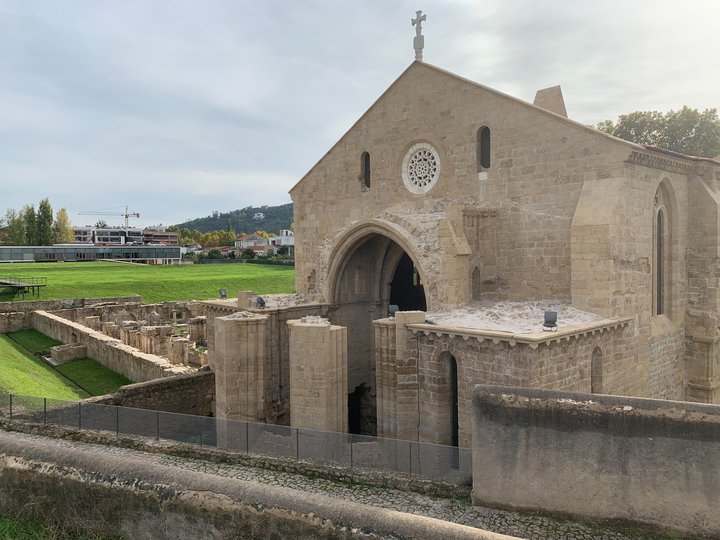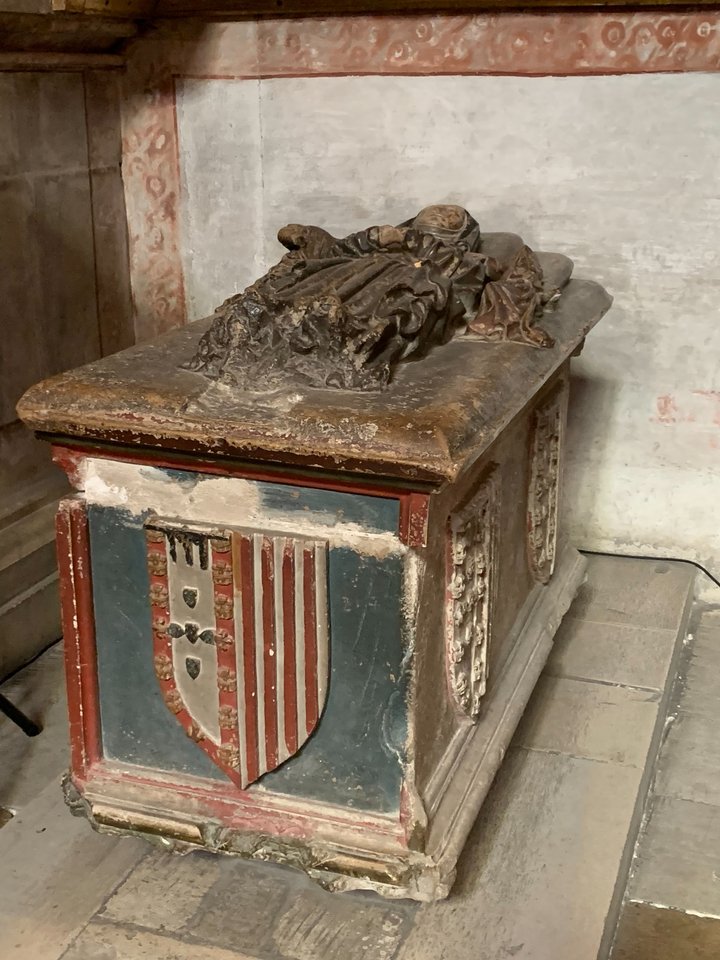Sit
in silence for more than a couple of minutes and the mind (mine, I’m
pretty sure yours) will go to strange, unexpected places. When faced
with a group of inmates at our local jail who were interested in
“meditation” (for want of a better word — I just define it as
‘sitting in silence’ without any mental add-ons), I’d usually
preface our quiet time with, “It’s always an adventure.” (They
liked that!)

The old convent, Coimbra (Barry Evans)
So it was yesterday, in the ancient cloisters of the new Convent of Santa Clara in Coimbro, Portugal. “New” is relative: the old convent, founded in 1330 by Queen Isabel, sits down by the river. It was abandoned after persistent flooding, hence the new 1677 convent, with its graceful cloisters, quiet as quiet can be, where the silence roared. (Thanks, Manfred Mann.) Sitting there, I found myself reflecting on the story we’d just been told, the “Miracle of the Roses,” which goes something like this:
Queen Isabel was a good soul, always giving food and money to the poor, much to which her husband the king’s disgust. One winter’s day she was heading out of the castle with a basket full of bread covered with a cloth when her husband caught her. “What are you carrying?” mean old King Denis asked. “Roses, my liege,” she replied. “Roses in January? Impossible!” he said, whipping off the cloth — and there was a basketful of roses. (Google “Miracle of the Roses” and you’ll find umpteen other versions of the story.) Because of this and her general virtue, she was canonized: Saint Elizabeth of Portugal (1271–1336).

“Queen Isabella and the Miracle of the Roses” by André Gonçalves, about 1740. (Public domain via Wikimedia)
Here’s where my mind went off on its own joyride, triggered by that name, Isabel:
Now
Queen Isabella, she gave heed, Said go buy the ships you need
Take
my jewels but travel slow, ‘Cos you might fall down to the world
below.
That comes from the very first record I owned, a birthday gift from my sister when I turned eight, a 10-inch 78. (Remember 78s? Walk around Old Town if you don’t, you’ll see plenty outside our several “treasures from the past” shops.) It was the 1950 song Christopher Columbus, written by Terry Gilkyson, sung by the Justin Timberlake of his day, Guy Mitchell.

Tomb of Saint/Queen Isabella of Portugal (Barry Evans)
Of course, that Isabella, Isabella I of Castile who sponsored the genocidal Columbus, wasn’t the same as the “Miracle of the Roses” Isabel of Portugal, who was long gone by 1492 and whose ornate stone tomb is in the new convent’s baroque church. In fact, Isabel/Isabella seems to be a popular name for royalty, in one of its many varieties (which include Beth, Betsy, Bettina, Betty, Elisabeth, Elise, Eliza, Elsa, Isabel, Isabella, Isabelle, Lettie, Lisa, Lisbeth, Liza, Liz, Lizzie). Elizabeths I and II are the most obvious if you’re into British royals. The name, as is the case with most perpetually popular names in the West, comes from the Bible: Elisheva, Moses sister-in-law, meaning “abundance in God.”
Which is where I went off on all the Beth’s, Lisa’s and Betsy’s I’ve known. Mostly fondly, some with a twinge of embarrassment, but all with that underlying awareness of the miracle that goes with human life: memory. That we can summon up — probably imperfectly, but still — people and events from our past, effortlessly. Never mind roses: memory, now that’s a miracle!

Cloisters, new convent, Coimbra (Barry Evans)
CLICK TO MANAGE